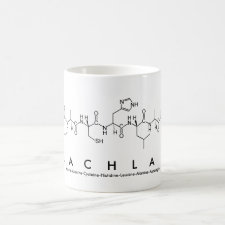
Authors: Boysen RI, Schwarz LJ, Li SY, Chowdhury J, Hearn MTW
Article Title: Photo-lithographic patterning of biomimetic molecularly imprinted polymer thin films onto silicon wafers.
Publication date: 2014
Journal: Microsystem Technologies
Volume: 20
Issue: (10-11)
Page numbers: 2037-2043.
DOI: 10.1007/s00542-013-2057-8
Abstract: This investigation describes the design and synthesis of molecularly imprinted polymers (MIPs) as patterned thin films, based on molecular modelling of functional monomer-template interactions and validation by NMR-spectroscopy. Several MIP thin films were prepared from a solution containing the template N-boc-l-phenylalanine and functional acrylic monomers at varying ratios with a cross-linker and initiator in a porogenic solvent. This solution was then spin-coated onto 3-(trimethoxysilyl)propyl methacrylate-functionalised silicon wafers and subsequently the film was photo-polymerised. After template extraction, the film thickness and topography of a methacrylic acid MIP was characterised with atomic force microscopy. A 4-vinylpyridine-MIP thin film was then made by depositing the pre-polymerisation solution on top of the methacrylic acid MIP by spin-coating. Photo-lithographic etching through a gold grid and extraction of non-polymerised solution from under the gold mask yielded a grid-patterned surface, in which two different MIPs alternate with dimensionality at the micro- or submicro-meter scale. Selectivity differences between the two MIP surfaces towards fluorescent template analogue N-dansyl-l-phenylalanine were documented using fluorescence microscopy. This side-by-side comparison on the same thin film allows fast and cost-effective assessment of the two very different MIP selectivities towards various biomolecules
Template and target information: N-boc-l-phenylalanine



Join the Society for Molecular Imprinting

New items RSS feed
Sign-up for e-mail updates:
Choose between receiving an occasional newsletter or more frequent e-mail alerts.
Click here to go to the sign-up page.
Is your name elemental or peptidic? Enter your name and find out by clicking either of the buttons below!
Other products you may like:
 MIPdatabase
MIPdatabase









